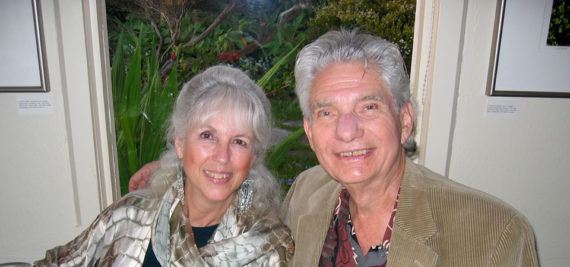by Anneloes Welling-Maassen
introduction
Many methods for coaching, mentoring and therapy can be understood and taught effectively using the framework “teaching facilitation”, which I have developed during the years that I have been working as a doctor, coach and trainer in communication skills. In this article I will describe how the framework is built. The concept of transformational psychology, in which the body takes an important place, is connected to a specific way of working with language by means of the “theatre of consciousness”. Based on this connection the framework consists of three layers:
- language
- model of consciousness of transformational psychology
- body
The insights and skills belonging to each layer can be taught and trained. This combination gives a solid base for learning diverse methods of coaching, mentoring and therapy, several of which are discussed below.
building the framework
Baars (1997) and Dijksterhuis (2007) describe the “theatre of consciousness” as a possible way of understanding the interaction between our conscious and unconscious. My discovery of this model, five years ago, led to a moment of sudden insight: this was the connection I had been looking for. I saw a link between the “psychology of selves” from transformational psychology, and working with affirmations, a specific way of working with language. It had long seemed to me that there was a connection between these two concepts, because they were both convincingly present and effective in life. In the theatre of consciousness I found a theoretical perspective with which to frame and develop my experiential knowledge.
Below I will describe my vision on language and working with affirmations, the essence of transformational psychology including the importance of body awareness and how the theatre of consciousness is the connection between those two.
language
Over the years I have learned to consider language as an energy system that is connected, down to the last detail, with all parts of our personality and with our collective unconscious. This energy system, moreover, has powerful laws which are inevitable. Unawareness of these laws can lead to misunderstandings, unintended injuries and quarrels.
If one knows the laws and is prepared to accept them, one has at one’s disposal a powerful instrument to communicate, to offend and manipulate, to understand and be understood (Bandler & Grinder, 2006).
language: working with affirmations
“Affirmare” is the Latin word for “confirm”. An “affirmation” is generally understood as a sentence which is formulated especially to obtain a certain goal –often related to a problem that you want to be resolved- which you continue to repeat lots of times a day, in mind or loudly (Hay, 2010). In a broader sense affirmations can be considered as compliments you make to yourself or others. A statement like “you will always find your own way” can be considered as an affirmation directed to someone else.
Frequently repeating an affirmation, after your decision to commit to a goal, sets in motion a sequence of processes. It is important to take into account seriously those processes; merely affirming won’t lead you to your goal.
In the first place affirmations evoke objections: repeating your affirmation brings to light convictions which withheld you from your goal until now (Knoope, 2008). It is important to examine to what extent those convictions are valid and useful to you. In the second place it is important to act, especially by using opportunities, some of which were probably there already, but which now, by repeating the affirmation, appear easier to use and more realistic (Knoope, 2008). Not everything has to be put in motion by yourself. As Goethe said: “A whole stream of events arises from a decision” (Miller & Rolnick, 2006, p 19). To make an affirmation which fits you well is not an easy job. Often you need someone else to think with you, someone who can look behind the borders of your awareness and can support you to enlarge your awareness.
language: transformational grammar
I would like to mention a second way of working with language: transformational grammar. In this grammar language is analysed by means of language. It is an analytic model, in which one is looking for what is not said (deletions), for that which is interpreted by thought patterns in a specific way (distortions) or generalised (generalisations) (Bandler & Grinder 1991; O’Connor & Seymour, 2005). While discussing the various methods of helping self and others, the transformational grammar will also be used.
concept of consciousness of transformational psychology
The concept of consciousness, based among others on Jung’s psychology of selves, describes how we, as human beings, know some parts of our personality, “primary selves”, and do not know many other parts.Those unknown parts are the “disowned” and “undeveloped selves”.The disowned selves of our personality are often polarities of our primary selves. These selves play a role much larger than we imagine, because they are disowned and operate on an unconcious level (Institute for Transformational psychologie (ITP), 2013; Stone & Stone, 2012).
An important aspect of working with this concept of consciousness is to recognize and to accept conflicting selves, or opposites, in ourselves: to experience physically every opposite, every voice, to recognize its individuality and accept it. Beside this it is important to develop awareness of each of these selves, to contemplate their energy without any judgement. Letting your inner voices speak, experiencing physically their energy and being aware of them, creates space and new options which were previously not available (ITP, 2013; Dyak, 1999). By being present in full energy and being seen and heard, inner selves tend to transform and to live according to their original intent. This transformation is an autonomous process. A method of communication based on the transformational psychology, in which inner selves and awareness are worked with, is called voice dialogue (ITP,2013).
It is beneficial to understand the roles that all our selves play in our life and our work. For example, based on this understanding, processes of transference and countertransference, “bonding patterns” in terms of transformational psychology, can be understood and avoided if desired (Stone & Stone, 2010). It makes us powerful and effective in our relationships.
body
To experience physically the energy of inner selves is an essential part of working with the concept of consciousness within transformational psychology, as is learning to focus the energy of our body by means of our attention or our breathing, for example to become more grounded (Dyak, 1999; Stamboliev, 2012).It is mainly for didactic reasons that “body” forms an apart layer of the framework.
Practising t’ai chi fits in this layer and the five leading principles of t’ai chi can be connected directly to the principles of transformational psycholgy in a voice dialogue session (Stamboliev, 2012). Although t’ai chi comprises much more than this, for my goal of teaching and training, those five principles are particularly important: energy follows thought, relaxation, grounding, moving from the centre and the ying-yang-principle: energy flows constantly between polarities.
the link: model of the theatre of consciousness
In the model of the theatre of consciousness the consciousness is compared to a theatre stage, and unconscious processes, a great part of our inner selves, are compared to the general public in the theatre (Baars, 1997; Dijksterhuis, 2007). If an unconscious process (member of the public) gives a signal to the consciousness (the theatre stage), than the signal is seen by the rest of the public (all unconscious processes). All of these unconscious processes will reckon with this signal which appeared on the theatre stage and was thus made public for all. The major part of our decisions, that we consider as being made “consciously” are, according to this theory, in fact made unconsciously (Wegner, 2002; Dijksterhuis, 2007).

This model explains the efficiency of affirmations. The affirmation is put on the theatre stage, this time directly by the consciousness itself, and repeated many times. In the same way all the selves take it into account.

The framework “teaching facilitation” with the three layers:

the three layers combined
in methods used in coaching, mentoring and therapy
In the following sections I will describe how to recognize the principles of transformational psychology and bodywork, in varying combinations, in the practice of seven methods commonly used in coaching, mentoring or therapy. The use of language within these methods will also be explored. As to bodywork I would like to emphasize that bodywork, or “energy work”, is an important aspect of transformational psychology itself. “Body” forms a separate layer in my framework, as it is useful didactically and because some methods use bodywork without engaging other principles of transformational psychology. After exploration of the various methods the idea of “resistance” is examined.
motivational interviewing
transformational psychology and language, mainly transformational grammar
Motivational interviewing is based on “natural change”, that is, treatment is to be perceived as facilitating a natural process (Miller & Rollnick, 2006). Working with voice dialogue can induce inner selves to transform “automatically” once they have been seen enough and heard enough and when they trust that changing will be beneficial for the person as a whole.
The handling of dilemmas in motivational interviewing matches the ways of exploring, experiencing and giving energy to opposites in transformational psychology. When the coach pushes for change, this creates a form of transference / counter transference, bonding patterns which obstruct changes.
“Change talk” is an important notion in motivational interviewing. Change talk refers to sentences about a. the disadvantages of the current situation b. the benefits of changing c. the purpose of change and d. optimism about change. The more change talk a person is speaking, the greater the chance that change will really be achieved. Motivational interviewers react selectively to the way language is used, so that ambivalence can be dissolved (Miller & Rollnick, 2006). In this respect motivational interviewing is more directive than is working with transformational psychology.
Transformational grammar is a powerful instrument for delineating between, for example, an inner self who wants to change and an interrupting, inner self who supposes “I have to do what other people tell me to do”. Experience with transformational grammar can support work with motivational interviewing.
It has been said that motivational interviewing is more than a “communication bag of tricks”. Rather, it is “a way of being”. This way of being can be trained by practising transformational psychology.
schema therapy
transformational psychology, with body, in a more structured form and language.
The “schemas” and “modes” of schema therapy match with the inner selves as described in transformational psychology. The difference is that the schemas are nominated in advance, while in a voice dialogue session the inner selves present themselves and appoint themselves. Schema therapy is therefore more directive than voice dialogue, and employs techniques like re-scripting and rewriting your own history, in which the therapist plays an active role. Among the other techniques used in this approach (Aalders & van Dijk, 2012) are some related to working with affirmations.
While working with relationships schema therapy uses insights which match the way bonding patterns are handled in tranformational psychology. Schema therapy and voice dialogue can complement each other: schema therapy offers additional structure to voice dialogue and voice dialogue offers intensification of the effect of schema therapy.
solution focused approach
transformational psychology and language, mainly working with affirmations
The solution focused approach is based on the notion that every person has enough power and insight to figure out and achieve solutions for their problems by themselves (Visser, 2011; Schlundt Bodien 2010). Specifically, those inner selves are appealed to who are capable and prepared to formulate concrete goals and to take steps forward, however small or large those steps may be. The effect produced by announcing the progress which has been made is used as much as possible, as it is in working with affirmations. The “wonder question” (if tonight, while you are sleeping, your problem is solved, effortlessly, without any action, what do you look like and how does your situation look tomorrow?) is a way of affirming and of formulating a goal, without being concerned about the way it can be reached or about possible obstructions. The fact that one is also specifically asked to consider the ways in which others will find out tomorrow that your problem is solved, is in my opinion, a way of activating awareness at the same time.
The description of the visitor-typical, the customer-typical and the complainer-typical interaction, focuses the attention of the therapist on the nature of the relation with the client (Visser, 2011; Schlundt Bodien 2010). Which inner self is speaking in particular? The measure in which language is used in a less or more directive way, is determined based on the answer to this question.
mindfulness based cognitive therapie (MBCT):
transformational psychology and body
Bishop (2004) has formulated a definition of “mindfulness” with two components. The first is self-regulation of attention, which means focusing the attention on the immediate experience and recognizing the mental events in the current moment, and the second is an inquisitive and accepting attitude towards what is experienced: every thought, feeling and physical sensation is accepted without any judgement and without trying to change anything. These components match with “energy follows thought” (t’ai chi) and “awareness” within the transformational psychology. Another area of congruence is the idea of “being” instead of “doing” (“doing by not doing”, t’ai chi) The techniques applied are among others the “bodyscan”, “sitting meditations” and “effectuating daily activities with attention”.
The mindfulness based cognitive therapy (MBTC) can be described as the “3th generation cognitive therapy” whereby it is not so much about adjusting the content of dysfunctional thoughts, feelings and behaviour, as is the goal in the “2th generation”. It is all about changing the attitude towards dysfunctional thoughts, feelings and behaviour (Schurink, 2013). This matches transformational psychology: recognising and embracing inner selves and realising they are (only) a part of you. Transformational psychology may offer a supplement by giving an opportunity for inner selves to transform.
transactional analysis
transformational psychology in a structured and simplified form.
In transactional analysis the Parent, Adult and Child are distinguished: three inner selves which are often easily recognised (Stewart & Joines, 2010). A very accessible and often effective method is to appeal to these inner selves by simply calling their names. They will, then, often manifest without coming forward in their full energy.
reframing by means of neuro linguistic programming
transformational psychology and body
This way of working is, in essence, the same as practicing voice dialogue, that is to say that neither the client nor the therapist knows which inner selves are active and what the theme is which is worked upon. The communication is achieved by physical signals which the client identifies as “yes” and “no” (Bandler & Grinder, 2006).
focusing
language and body
While focusing, one is perceiving carefully what is to be felt in the body, without any judgement. The client searches for words which match exactly with the felt experience by letting the words resound until they really fit. This leads to relief, often with a deep sigh; a physical change which creates new space (Gendlin, 2004).
The framework completed:

“resistance”
In many forms of communications skills training explicit attention is paid to what is called “handling resistance”. From my point of view this definition alone obstructs accomplishing change. Giving a name to a would-be phenomenon, suggests a right to exist to the phenomenon. Symptoms which could fit this phenomenon, are then interpreted as such. I will describe in what way transformational psychology, schema therapy, motivational interviewing and solution focused therapy consider “resistance”.
In transformational psychology inner selves are nominated who are strongly attached to the status quo, like the “protector/controller”. If the protector/controller presumes danger, he/she acts in a powerful way to reinforce the situation as it is. Interpreting this as “resistance” evokes the tendency to either convince the protector/controller further or to pass it by, perhaps in a furtive way. Within transformational psychology the protector/controller is considered to be an ally of the therapist instead of an enemy. Talk with the protector/controller, listen to what the important values and standards are in his/her eyes. Which conditions should be met, at the least, before any change could be made? When this is spoken of sufficiently, almost all protectors/controllers are prepared to permit other inner selves to experiment with new behaviour. When it gets too much for them, they will jump in.
If, instead, one succeeds in bypassing or misleading the protector/controller, the protector/controller hits back mercilessly and will undo any change which is made. Treat the protector/controller with the respect he/she deserves and the phenomenon “resistance” does not exist (Stone & Stone 2012).
Schema therapy recognises and nominates the role of the protector/controller. In this methodology one tends, more than within transformational psychology, to powerfully address the protector/controller, requesting him/her to speak less intrusively.
Motivational interviewing does not consider “resistance” as a quality of the client but as a characteristic of the relationship between client and therapist. Behaviour of the therapist either evokes defensive reactions or “change talk” of the client. Different forms of bonding patterns can be recognised in these interactions. Motivational interviewing speaks of “dissonance” and “consonance”. The therapist is seen as highly responsible for consonance or dissonance in a relationship (Miller & Rollnick, 2006).
Resistance is seen as a characteristic of the relationship within a solution focused approach as well. This is evident, for example, when recognising the complainer-typical interaction of a client instead of visitor-typical interaction. The ambition is to use the specific information given by a type of interaction to make progress (Visser, 2011; Schlundt Bodien 2010). This highly resembles the intention to “listen well to the protector/controller”.
conclusion
Increasing understanding and training those skills which are part of working with language, transformational psychology and body work, provide a solid base for learning to work with many methods, because it gives insight in underlying processes. To coaches, mentors and therapists with much experience, the training often offers a frame for “what they already knew”. Recognising and nominating the frame sharpens their ability to choose an intervention when choosing between two closely related alternatives. .
Affirmations on the theatre stage enlarge the possibilities for new behaviour; and probably the freedom of the not-so-free-will. Affirmations support determination and efficiency.
With voice dialogue it is possible to examine your own shadow “with a flashlight”.
Furthermore transformational psychology offers a supplement and intensification to methods as schema therapy and mindfulness based cognitive therapy. The desired “way of being” as described in motivational interviewing, can be trained by voice dialogue sessions. Body awareness and grounding support self-knowledge and self-confidence.
Anneloes Welling-Maassen
October 2013
Resources:
Aalders, H., Dijk, van J. (2012). Schemagerichte therapie in de praktijk. Amsterdam: Hogrefe Uitgevers.
Baars, B.J. (1997). In the theatre of consciousness. Oxford: Oxford University Press
Bandler, R., Grinder, J. (2006). De betovering van de taal, de neuro-linguïstische methode voor gedragsverandering. Haarlem: de Toorts. [Original title: Frogs into princes, Neuro-Linguistic Programming].
Bandler, R., Grinder, J. (1991) Structuur van de magie, een boek over taal en therapie. Lochem: de Tijdstroom.
Dijksterhuis, A. (2007). Het slimme onbewuste, denken met gevoel. Amsterdam: Uitgeverij Bert Bakker.
Dyak, M.D., (1999) The Voice Dialogue Facilitator’ Handbook. Seattle: L.I.F.E. Energy Press.
Gendlin, E. (2004). Focussen: gevoel en je lijf. 8e druk. Haarlem: de Toorts
Hay, L.L. (2010). Je kunt je leven helen. 25e druk. Groningen: Uitgeverij De Zaak.
[Original title: You can heal your life].Instituut voor Transformatiepsychologie, Wat is Voice Dialogue? [Online]. Bergen: ITP, [gezien op 28 september 2013], www.voicedialogueworld.com.
Knoope, M. (2008). De creatiespiraal, natuurlijke weg van wens naar werkelijkheid. 23e druk. Nijmegen: K.I.C.
Miller, R., Rollnick, S. (2006) Motiverende gespreksvoering. 3e druk. Gorinchem: Theologische uitgeverij Ekklesia. Original titel: Motivational Interviewing, Preparing People for Change.
Stamboliev, R. (2012). De energetica van Voice Dialogue. Groningen: Uitgeverij de Zaak. Original title: The Energetics of Voice Dialogue, principles of transformation.
Schlundt Bodien, G. (2010). Oplossingsgericht werken in HRM: een methodiek voor de professional. Haarlem: Uitgeverij Nelissen.
Stewart, I., Joines, V. (2010). Transaktionele analyse: het handboek voor persoonlijk en professioneel gebruik. 8e druk. Amsterdam: Uitgeverij SWP.
Stone, H., Stone, S. (2012). Thuiskomen in jezelf, de voice dialogue visie. 4e druk. Groningen: Uitgeverij De Zaak. Original title: Embracing ourselves, the Voice Dialogue Manual.
Stone, H en Stone, S. (2010). Thuiskomen bij elkaar, de relatie als gids en leraar Groningen: Uitgeverij de Zaak. Original title: Embracing each other; how to make all your relationships work for you.
Visser, C. (2011). Doen wat werkt: oplossingsgericht werken, coachen en managen. 4e druk. Culemborg: van Duuren management.
Wegner, D.M. (2002). The Illusion of Conscious Will. Cambridge: MIT Press.




















